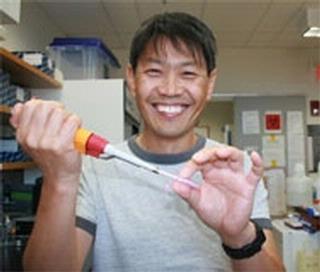Emory and University of Rochester researchers have discovered an extra way by which HIV adapts to survive in a hiding spot in the human immune system. The results are published in the Journal of Biological Chemistry.
A team led by Baek Kim from the University of Rochester and Raymond Schinazi from Emory found that when HIV faces a shortage of the building blocks it usually uses to replicate, the virus adapts by using different building blocks. The discovery may offer scientists a new way to try to stop the virus.
One of HIV’s favorite hiding spots is an immune cell called a macrophage, whose job is to chew up and destroy foreign invaders and cellular debris. One can think of macrophages as worker bees: they don’t reproduce because they’re focused on getting stuff done.

Raymond Schinazi, PhD, DSc, is director of the Laboratory of Biochemical Pharmacology at Emory's Center for AIDS Research
Normally, HIV uses “dNTPs” (building blocks of DNA), but dNTPs are found at very low levels in macrophages because they’ve stopped dividing and making new DNA. Current drugs generally target dNTPs, and aim at the infection in a different type of cells: T cells.
Macrophages do have high levels of RNA building blocks (“rNTPs”). The team found that HIV uses primarily rNTPs instead of dNTPs to replicate inside macrophages. When the team blocked the ability of the virus to interact with rNTPs, its ability to replicate in macrophages was cut by more than 90 percent.
“The first cells that HIV infects in the genital tract are non-dividing target cell types such as macrophages,” Kim says. “Current drugs were developed to be effective only when the infection has already moved beyond these cells. Perhaps we can use this information to help create a microbicide to stop the virus or limit its activity much earlier.”
Compounds that interfere with the use of rNTPs already exist and have been tested as anti-cancer drugs.
“We are now developing new anti-HIV drugs jointly based on this novel approach that are essentially non-toxic and can be used to treat and prevent HIV infections,” Schinazi says.

Baek Kim, PhD
The first authors of the paper are graduate students Edward Kennedy from Rochester and Christina Gavegnano from Emory. Other authors include graduate students Laura Nguyen, Rebecca Slate and Amanda Lucas from Rochester, and postdoc Emilie Fromentin from Emory.
The research was funded by the National Institute of Allergy and Infectious Disease and the Department of Veterans Affairs.
University of Rochester press release

